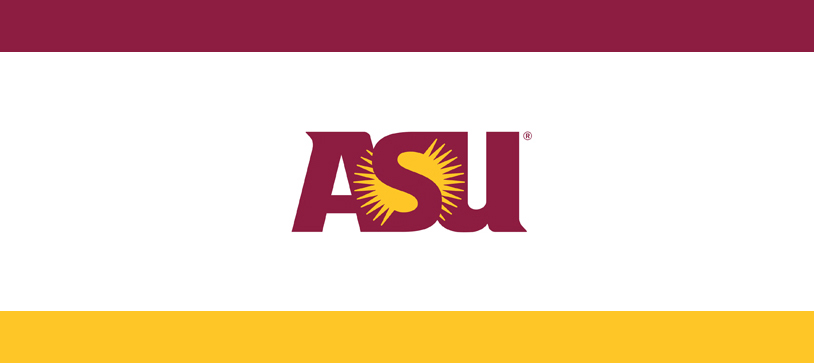
Q&A: 5 Questions With Nichol Luoma & Jim Dwyer, Arizona State

‘INCLUSIVE AND EXCELLENT’ HOW ASU IS CHANGING THE SUSTAINABILITY GAME FOR TODAY’S UNIVERSITIES

Tooker House is no ordinary college dorm. The home to engineering students is the first voice-enabled residence at a university. The Fulton Schools Residential Community at Tooker House features a maker lab and “smart campus” technologies, including Amazon Echo Dot devices. That it is housed on the campus of Arizona State University should surprise nobody. As one of the most forward-thinking schools in the country, ASU continues to blaze a path that others follow.
Take its innovative relationship with Adidas®. Together, they formed the Global Sport Alliance and Global Sport Institute, which will explore topics such as diversity and race, sustainability and human potential through sport. Or the country’s first net zero energy building, which uses no more energy than it creates. The Student Pavilion on the Tempe campus is home to offices, meeting rooms and the headquarters of the Undergraduate Student Government and the Council of Coalitions.
And the list goes on. The university’s students, faculty and staff embrace an innovative spirit that is committed to advancing knowledge to have a significant, societal impact. Together, they continue to pursue its mission of making higher education accessible at an unprecedented scale, all while maintaining the very highest levels of excellence.
EnvisionED sat down with Nichol Luoma, Associate Vice President, University Business Services & Sustainability Operations Officer, and Jim Dwyer, Executive Director, Auxiliary Business Services, to get their thoughts on the importance of sustainability on today’s campuses.
Why must innovation be more than just a slogan for today’s universities?
Nichol Luoma: The term innovation can be overused, but our industry is at a point where we must role model the expression. Today’s students have grown up with smart devices and expect a different level of service than 20 years ago. That means universities must start “walking the walk” when it comes to innovation. I am proud to say that ASU actually role models innovation in everything we do. I believe we are listening to our market, our prospective students and creating a new model—the New American University.
What can universities do to follow this lead?
Luoma: It starts at the top. Our charter states that, “We will be inclusive and excellent,” something long believed to be mutually exclusive in higher education. Under Dr. Michael Crow’s leadership (ASU President), we are achieving this and changing the paradigm of higher education. Each of us are empowered to be role models for innovation and have high expectations for our employees and our industry partners.
Why is it important to find a good partner?
Luoma: I am a firm believer that an organization should focus on its mission and where the organization excels. I think it is important to seek out market leading partners in non-core areas that can be more effective and efficient in their service/product delivery. This is much trickier than it sounds. I have now worked in non-profit and for-profit. It can be hard to find for-profit partners that don’t get enticed by the short-term gains by periodically cutting corners or by focusing on/advancing what is important to them.
For major partnerships, I think it is critical that alignment of vision/ mission and goals exists. There are executive sponsors that have the long-term view that can keep the team focused. Both the supplier and the buyer in a relationship have mutual responsibilities and a true partnership is demonstrated when both parties have clear objectives, hold each other accountable, directly discuss issues and work together to resolve.
“The term innovation can be overused, but our industry is at a point where we must role model the expression.”
Nichol Luoma, Associate VP, University Business Services & Sustainability Operations Officer, ASU
There is not the sense of a “win-lose” negotiation in these discussions. There should always be a focus on the win-win and understanding what each is trying to accomplish. This type of relationship takes a lot of effort; it is similar to marriage. You have to find the right partner with the right intent and objectives in the beginning for this to work.
Jim Dwyer: It is also important to remember that all partnerships will eventually require an investment of resources and having good partnerships enables the appropriate allocating of resources to maximize impact where bad partners typically channel resources towards responding to issues, which ultimately prevents the achievement of long-term mutual success.
How has your partnership/ relationship with Canon Solutions America helped aid your efforts?
Luoma: The very nature of our relationship with Canon is unexpected. We work together to drive sustainability. When I first started at ASU, I was told one of the collective objectives of the relationship was to teach people not to print. I was surprised that this organization would be so forward thinking. Canon realized early on that connecting to and supporting the objectives its customer has at the highest level of the organization will be a more powerful long-term win-win than maximizing short-term profit.
Dwyer: A big element to developing the relationship to this level has been building an engagement framework to ensure our teams are in alignment on operations, strategy and vision, which is critical to achieving our goals.
Luoma: A critical component of the partnership was coming together to develop a strategic roadmap that clearly aligned initiatives around shared goals and objectives. An example of an initiative derived from the development of the strategic roadmap was the integration of our Canon partnership with our ASU Print and Imaging Lab. The Lab is an on-campus print production enterprise with the primary focus of giving students a foundation for a professional career in print and graphic design fields and fulfilling the internal print needs of the university.
What does it feel like to be the new guard in ASU’s efforts?
Luoma: It’s very humbling. I am following some amazing leaders— Ray Jensen and John Riley, clearly excellent acts to follow. I take comfort in the fact that I work alongside a great team of colleagues who are passionate about ASU and what we do here. They know exactly how to nurture partnerships. Jim Dwyer and Krystal Lewis, with the support of their teams, as well as their colleagues in supply chain management, Jamon Hill (Deputy Chief Procurement Officer) and Diana Gallese (Director, Materials Management), the ASU Print and Imaging Lab, the marketing hub, Sun Devil Athletics, the university technology office and the rest of the university have truly taken us to the next level.


